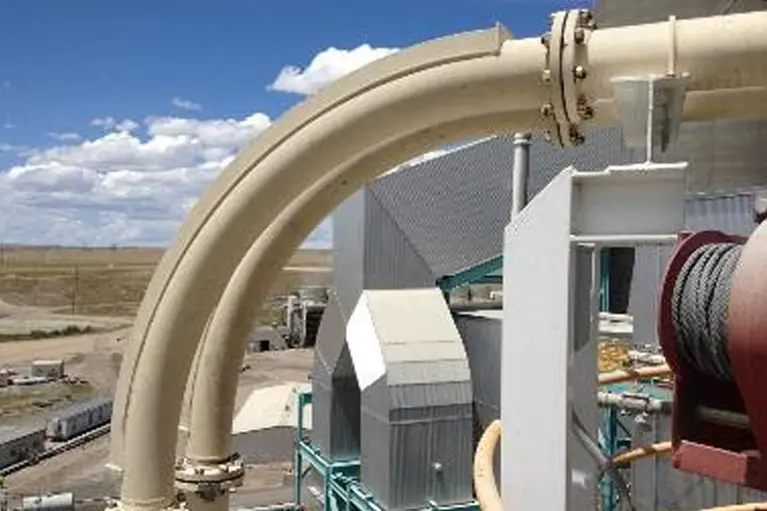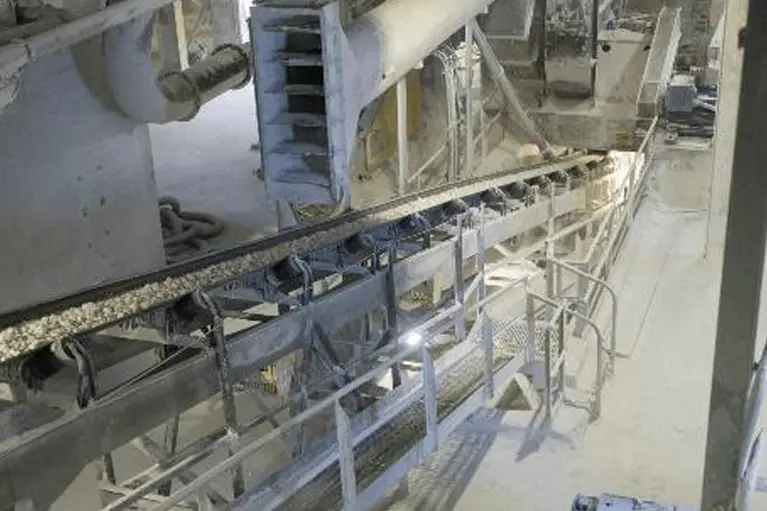Systems
Bulk Chemical Storage & Feed Systems
Our Bulk Chemical Storage and Feed Systems are designed to efficiently handle and store dry bulk reagents such as lime, soda ash, magnesium oxide, and others. We understand the importance of an effective bulk material handling processes for your application. We also recognize that every bulk material handling situation is unique and extensive expertise is required to build a customized system to meet your specifications and footprint requirements.
At Carmeuse Systems, we have the knowledge and engineering expertise to build a system customized to your needs effectively. We understand that these systems are crucial for various industrial applications to ensure safe, reliable, and cost-effective storage and feeding of bulk chemicals into your process. Whether you are in water treatment, mining, or any other industry requiring bulk chemical handling, our solutions are tailored to meet your specific needs.
Our bulk chemical storage systems are engineered to provide optimal performance and longevity. They are built with high-quality materials to withstand harsh environmental conditions and ensure the integrity of the storage, conveying, and handling of your reagent. With our systems, you can achieve seamless integration into your existing processes, enhancing operational efficiency and safety.
Interested in a Bulk Chemical System or have the need for a pre-engineered system? Please contact us.
Features&Benefits
Features & Benefits
Carmeuse Systems’ custom bulk chemical storage and feed systems are tailored to your operational needs.
- Customization: Carmeuse Systems collaborates with you to design a storage and feed system that meets your unique requirements, providing flexibility and adaptability.
- Expert Engineering: Our engineering experts have a deep understanding of the necessary system components and the raw material being handled, to ensure efficient system design and operation.
- High Quality Construction: Our systems are built with quality materials to ensure durability, long-term performance, and reduce maintenance costs.
- Efficiency: Our feed systems are engineered to provide precise and consistent chemical dosing, improving process control.
- Easy Installation and Integration: At Carmeuse Systems, we simplify the setup process, minimizing downtime and disruption for your operation.
Capabilities
Capabilities
Our teams have decades of combined experience in building dry bulk reagent handling systems where all components work together effectively. We are truly a partner in this critical component of your application, and we have knowledge in every aspect of this system from truck offloading and conveying systems through to storage of various dry bulk reagents. Whether you have a system that needs replacement of repair, or if you are in need of an entirely new system, trust your project to the experts.
Specifications
Specifications
Our bulk chemical storage and feed solutions are available in a range of sizes and configurations to meet the diverse needs of our clients and can be customized to suit your sites specifications. To discuss your specific needs, we suggest contacting us to speak with our engineering team.
Here are some general specifications:
- Silos/Storage: Available in various capacities, from small-scale storage bins and hoppers to large silos; we can help you determine what makes sense for your process.
- Dust Control: Bulk chemical storage requires the use of dust control measures to prevent unsafe and wasteful working environments. Our experts can ensure your customized system has a dust control process that creates a clean and safe workspace.
- Feed & Conveying Systems: Equipped with advanced feed systems for precise and consistent chemical dosing and conveying systems that suit your reagent included pneumatic conveying, screw conveying, belt conveying, and more.
- Automations & Controls: Metering and control systems are available that are specific to the customized system that has been created for your site. With the ability to monitor the operation of your system, you will have peace of mind.
- Reagents Utilized: Suitable for storing and handling a wide range of bulk reagents, including lime, soda ash, alum, magnesium oxide, and more.
Our bulk chemical storage solutions are designed to provide reliable and efficient performance, ensuring the safe and effective handling of your bulk chemicals. Contact us today to learn more about how our solutions can benefit your operation.


End-2-End Support
When it comes to engineering a lime or dry bulk reagent handling system, Carmeuse Systems is your go-to solution provider from End-2-End. By utilizing the experts at Carmeuse Systems, you ensure that all of the aspects of your system work seamlessly together, reducing the risk of issues and ensuring that your system functions smoothly.
As part of Carmeuse, we understand the systems necessary to handle dry materials effectively but also the intricacies of the raw material itself. Carmeuse is a leading provider of lime and limestone products and through our End-2-End Services, we support customers from the mines where the raw material is produced through to the point of application.
The benefits of working with Carmeuse Systems includes:
- Expertise in Lime and Limestone
- Engineering and Design Expertise for Dry Bulk Reagent Systems
- Component Parts to Integrate into Existing Applications
- System Retrofits and Upgrades
- Maintenance and Replacement Parts at the Ready
- Access to Experts to Diagnose System Issues and Improve Efficiencies
- Laboratory Services through our Innovation Center
Learn more about our End-2-End Services.
